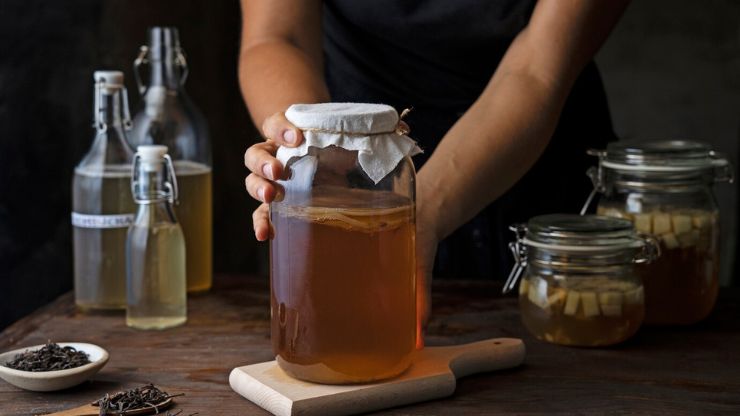Welcome to our guide on fermenting in hot weather! As temperatures rise, so do the challenges of maintaining the perfect conditions for successful fermentation. Whether you’re a seasoned fermenter or a beginner, these 7 expert tips will help you navigate the heat and achieve delicious, probiotic-rich results.
Table of Contents
Toggle7 Tips for Fermenting in Hot Weather
Fermenting in hot weather presents both opportunities and challenges for those seeking to cultivate delicious, probiotic-rich creations. As temperatures soar, the microbial activity within your ferment accelerates, potentially leading to quicker results.
However, the increased heat also heightens the risk of over-fermentation, which can adversely affect the flavor, texture, and overall quality of your fermented goods. To mitigate these challenges and ensure a successful fermentation process in hot weather, consider the following seven expert tips.
1. Temperature Control is Key
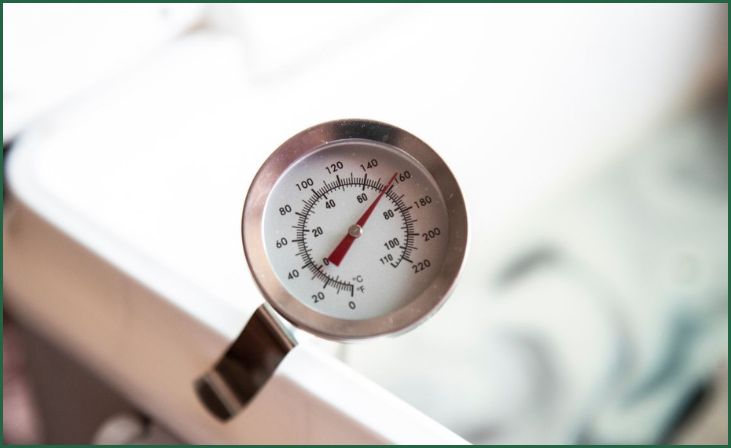
Maintaining the right temperature is crucial for successful fermentation, especially in hot weather. Invest in a reliable thermometer to monitor the ambient temperature of your fermentation space. Ideally, aim for temperatures between 68°F and 75°F (20°C to 24°C) to strike a balance between encouraging microbial activity and preventing over-fermentation. If the mercury rises beyond this range, explore creative solutions such as using a cool, dark room or implementing cooling devices to create a favorable environment for your ferments.
Also Read: How Long Can You Leave Your Fermented Foods?
2. Shorten Fermentation Times
In hotter climates, the fermentation process tends to move at a faster pace. To avoid over-fermentation, consider reducing the fermentation time recommended in traditional recipes. Regularly monitor the progress of your ferment, and adjust the duration accordingly. Shortening fermentation times helps preserve the desired flavors and textures of your creations while preventing the development of off-putting tastes that can result from prolonged exposure to elevated temperatures.
3. Choose Heat-Resistant Strains
Not all strains of bacteria and yeast thrive in high temperatures. Selecting heat-resistant cultures tailored to warmer conditions can significantly enhance your chances of success. Look for strains that perform well in a broad temperature range and are specifically recommended for hot weather fermentation. This strategic choice ensures that your ferments maintain their integrity even when faced with the challenges posed by scorching temperatures.
4. Optimize Ingredient Ratios

In hot weather, certain ingredients may behave differently during fermentation. Adjusting the ratios of components in your recipes can help counterbalance the effects of elevated temperatures. For instance, reducing the amount of sugar or salt in your mix can prevent your ferment from becoming overly acidic or salty due to the accelerated fermentation process in hotter conditions. Experimenting with ingredient proportions allows you to adapt your recipes to the unique challenges presented by fermenting in a warmer climate.
5. Embrace Seasonal Produce
Take advantage of the seasonal bounty provided by hot weather by incorporating locally available produce into your ferments. Fruits and vegetables that thrive in warmer temperatures not only add a regional touch to your creations but also tend to ferment more successfully in their natural environment. Experiment with tropical fruits, heat-resistant herbs, and other seasonal ingredients to create unique, flavorful ferments tailored to the hot weather conditions.
6. Monitor Hydration Levels
In hot weather, maintaining proper hydration levels in your ferment is essential. The increased temperature can lead to higher evaporation rates, potentially causing your ferments to dry out. Ensure an adequate supply of liquid to support the fermentation process and prevent the formation of dry, unappetizing textures in your final product. Regularly check the moisture levels and, if necessary, top up with additional brine or liquid to keep your ferments thriving in the heat.
7. Practice Good Sanitation
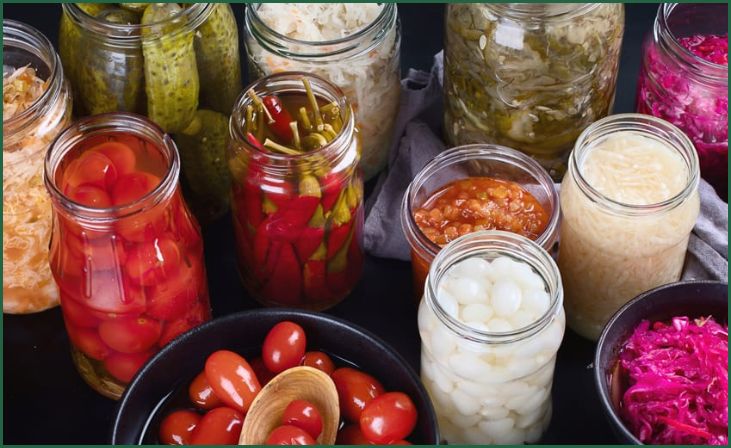
Hot weather can exacerbate the growth of unwanted bacteria and molds, posing a risk to the health of your ferment. Prioritize impeccable sanitation practices throughout the fermentation process. Sterilize equipment thoroughly, use clean, high-quality ingredients, and maintain a hygienic fermentation environment. By preventing the intrusion of harmful microorganisms, you create a conducive space for the beneficial microbes to flourish and produce the flavorful, safe ferments you desire.
Also Read: Canning vs Fermenting
Don't just scroll, subscribe!
BuzzTrail's unique web-stories are the cure for boredom you've been waiting for.
In conclusion, fermenting in hot weather demands a thoughtful and adaptive approach. By incorporating these seven tips into your fermentation routine, you’ll not only navigate the challenges posed by elevated temperatures but also unlock the full potential of your ferments. Embrace the nuances of hot weather fermentation, experiment with unique ingredients, and enjoy the satisfaction of producing perfectly fermented creations, even in the most challenging climates. Happy fermenting!
Common Mistakes You Must Avoid While Fermenting in Hot Weather
Fermenting in hot weather can be a rewarding endeavor, but it also comes with its unique set of challenges. To ensure a successful fermentation process in elevated temperatures, it’s crucial to be aware of common mistakes that can compromise the quality of your ferments. Here are some key pitfalls to avoid when fermenting in hot weather:
1. Neglecting Temperature Monitoring
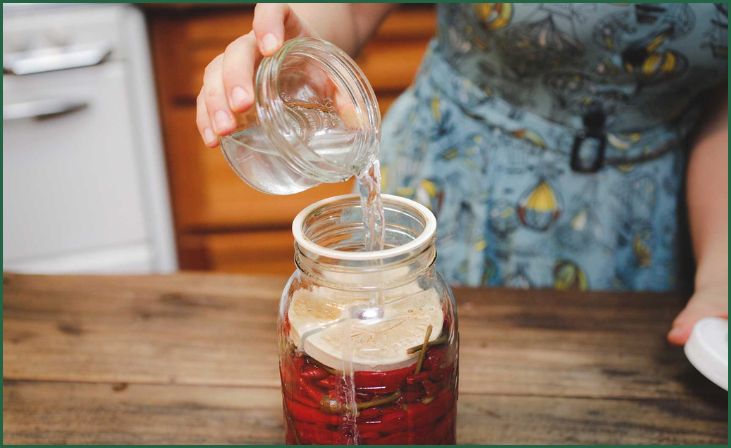
One of the most common mistakes in hot weather fermentation is neglecting to monitor and control the temperature adequately. Excessive heat can lead to rapid fermentation, risking over-fermentation and negatively impacting the flavor and texture of your ferments. Invest in a reliable thermometer and regularly check the temperature to maintain an optimal range for microbial activity, typically between 68°F and 75°F (20°C to 24°C).
2. Ignoring Shortened Fermentation Times
In hotter climates, the fermentation process tends to happen more quickly. Failing to adjust your fermentation times accordingly can result in over-fermented products. Regularly check the progress of your ferments and be prepared to shorten the fermentation duration compared to standard recipes. This adjustment helps prevent the development of undesirable flavors and ensures a better overall outcome.
3. Using Inappropriate Strains
Not all fermentation cultures are suitable for high-temperature conditions. Using strains that are not heat-resistant can lead to failed ferments or undesirable outcomes. Choose cultures specifically recommended for hot weather fermentation to ensure they thrive in the elevated temperatures. This strategic selection is crucial for maintaining the quality and integrity of your ferments in challenging environmental conditions.
4. Overlooking Ingredient Ratios
The accelerated fermentation process in hot weather can impact the behavior of ingredients. Failing to adjust the ratios of sugar, salt, and other components can result in imbalanced flavors and textures. Experiment with ingredient proportions, reducing the amounts of sugar or salt as needed, to maintain the desired taste profile and prevent over-acidification or excessive salinity in your ferments.
5. Neglecting Hydration Levels
Hot weather can increase evaporation rates, potentially leading to insufficient liquid levels in your ferment. Neglecting hydration levels can result in dry and unappetizing textures. Regularly check the moisture content of your ferments and add additional brine or liquid as necessary to ensure proper hydration throughout the fermentation process.
6. Using Low-Quality Ingredients
In challenging conditions, the quality of your ingredients becomes even more critical. Using low-quality or contaminated ingredients can introduce unwanted microorganisms, leading to failed ferments or spoilage. Prioritize fresh, high-quality produce, and ensure proper sanitation of all equipment to create a conducive environment for beneficial microbes to flourish.
7. Poor Sanitation Practices
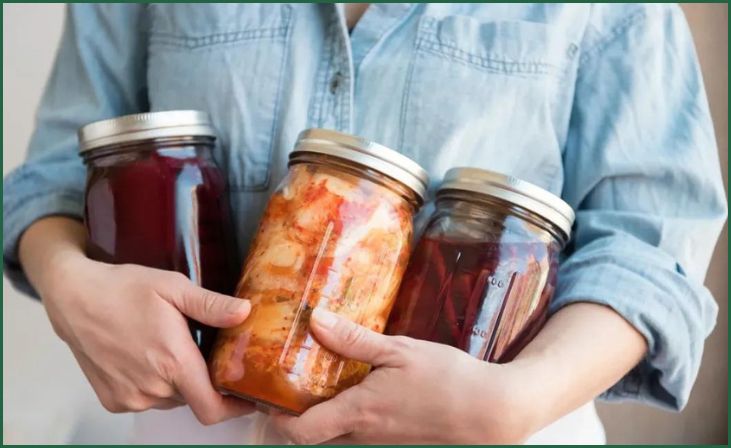
Hot weather can promote the growth of unwanted bacteria and molds. Poor sanitation practices increase the risk of contamination, jeopardizing the success of your fermentation. Maintain rigorous cleanliness throughout the process by sterilizing equipment, using clean utensils, and creating a hygienic fermentation environment. This proactive approach helps prevent the intrusion of harmful microorganisms, ensuring the safety and quality of your ferments.
Also Read: Fermenting with Dead Sea Salts
In summary, avoiding these common mistakes is essential for a successful fermentation experience in hot weather. By monitoring and adjusting key factors, selecting appropriate strains, and practicing good sanitation, you can navigate the challenges of elevated temperatures and produce delicious, high-quality ferments. Stay attentive to the unique considerations of hot weather fermentation, and you’ll enjoy the satisfying results of your efforts. Happy fermenting!
Conclusion
Fermenting in hot weather doesn’t have to be a daunting task. By applying the tips outlined in this guide, you’ll not only overcome the challenges posed by elevated temperatures but also unlock the full potential of your ferments. Embrace the warmth, follow our expert advice, and enjoy the satisfaction of perfectly fermented creations, even in the hottest of climates. Happy fermenting!
FAQs
How does hot weather affect the fermentation process?
How does hot weather affect the fermentation process?
Hot weather accelerates the fermentation process, often leading to quicker results. However, it also poses the risk of over-fermentation, affecting the taste and texture of your ferments. Proper temperature control becomes crucial to maintain the desired quality.
Can I ferment the same way in hot weather as in cooler seasons?
Can I ferment the same way in hot weather as in cooler seasons?
While the basic principles of fermentation remain consistent, adapting to hot weather requires additional considerations. You may need to shorten fermentation times, adjust ingredients, or implement cooling strategies to prevent the development of off-flavors.

